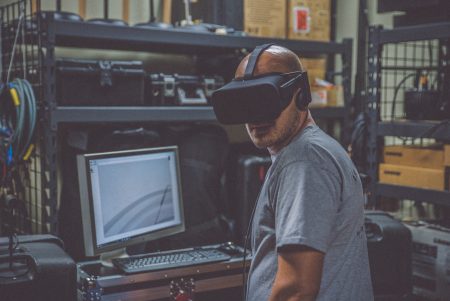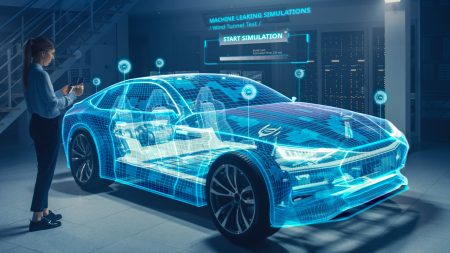Introduction to Robotics and AI for Small Business Owners
The Covid-19 pandemic has posed a host of stern challenges for small manufacturing businesses such as acute shortage of labor, disruption in the supply chain, and severe fluctuations in demand.
The impact of the ongoing outbreak on the global supply chain has been a major wake-up call for manufacturing companies to realize the significance of reshoring.
This blog aims to introduce the benefits of robotics and artificial intelligence (AI) to small and medium-sized enterprises (SMEs) The following discussion points are likely to answer frequently asked questions about robotics and AI to those new to automation:
Robotics and Artificial Intelligence are the buzzwords these days. What should I know about them as a small business owner?
You need to know that an industrial robot is merely a manufacturing tool, which works just like an advanced conveyor belt. AI is, in spite of its name, merely a statistical computation that matches patterns in images or other data.
What are the advantages of automation that make reshoring possible?
The expected benefits from adoption of robotics and AI are to automate and streamline your manufacturing process, which will lower the production cost and other factors like machine time and labor time. Particularly, reducing labor time is likely to result in cost savings. Besides, there are other benefits of incorporating robotics and AI:
- Meet local demands: In this modern era of customization, integrating robotics and AI can make small businesses more competitive by manufacturing products closer to customers, along with personalization.
- Reduce longer wait time: Usually, the wait time is much longer if there are logistics issue. For example, in case you need to deliver a car in South Africa, the engine is procured from one country and other parts from another country, it will increase the wait time for end customers.
- Empower People: People working in manufacturing just like machines are likely to be a thing of the past soon. Using robotics and AI, factory workers can upskill to knowledge workers.

Mass personalization
What is the impact of AI and Robotics on education and learning? How will it shape up the future?
A new-age education model will be necessary for lifelong learning and will replace traditional learning models, as machines are likely to over dull, risky, and tedious jobs.
However, the adoption of robotics may pose risks to some jobs for being redundant. This is why countries and governments need to prepare and provide support to pave the way for lifelong learning.
For example, on the software side, MIT Ph.D student Juho Ki has developed interactive video players like ToolScape and LectureScape, which shows smarter ways of teaching and learning for both learners and experts.
When it comes to hardware, augmented reality glasses in manufacturing can add a heads-up display by superimposing “the best welder video” for an apprentice to enable visual learning.
Robots with teaching pendant function mode can automatically program the path using hand motions and performing simple tasks, making learning easy.
How can companies of all sizes get benefits from AI and Robotics?
The integration of collaborative robots (cobots) enable organizations to incorporate flexible manufacturing. Cobots are easy to dismantle and redeploy in different business lines, depending on the requirement.
A study by MIT in a BMW plant shows that the collaboration between humans and robots results in 80 percent more productivity than robots or humans working separately.
Field visits of managers for insight hunting, trends and patterns are being replaced by AI based accurate customer behavior models enabling personalization.
Studies by Marco Iansiti and Karim R. Kakhani of Harvard describe how AI-powered digital companies out compete traditional organizations based on data driven decision making, customer engagement, and unique business positioning. Traditional models compete on cost, quality, etc.

Training and education at workplace
What will be the future of robotics and AI in the next 5 years? Should I be concerned about making significant investments?
Experts anticipate that robotics and AI will make major progress, and will be part of almost all the aspects of daily lives in the next 5 years. There will be more instances of using collaborative robots or cobots for easy deployment, space-saving, and quick payback time.
As the technologies are evolving, humans will still play crucial roles for businesses to gain competitive advantage. AI can play a critical role in providing responsive customer service due to improved employee efficiency.
For example, AI integration in a bank can quickly alert employees to anticipate risky contracts, cyber breaches, and fraud. With regards to investment, many small manufacturers who have not tried automation as yet, perceive it as costly, difficult to implement, and suitable only for large corporations.
However, due to the advancement of technologies, automation has become accessible and affordable even for small businesses. The future belongs to collaborative technologies and the meteoric rise of Industry 5.0
What should small manufacturers new to automation and AI keep in mind?
The important thing to keep in mind regarding automation is to go for incremental adoption. Companies need to carry out the automation process gradually by taking one step at a time.
This means identifying the low hanging fruits or the simplest tasks for automation first. Automate what can be automated and simplify the rest.
One the other hand, AI works best as a single uniform layer across the organization to prevent creating more data moats. Applying AI for binary decision making is a nice way to start.

Creativity through technology
How can I get started?
Getting started with automation is easier than perceived. Proof of concept, on-site demos are common along with value calculators for the customers. Many companies are deploying robots in innovative ways such as by renting robots and asking employees to identify use-case scenarios for robot deployment.
I personally admire and champion this kind of bottoms up approach to robotics. It creates the enabling environment for innovation and empowers human ingenuity which is at the heart of Industry 5.0
Filed under:
